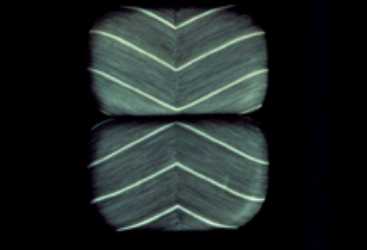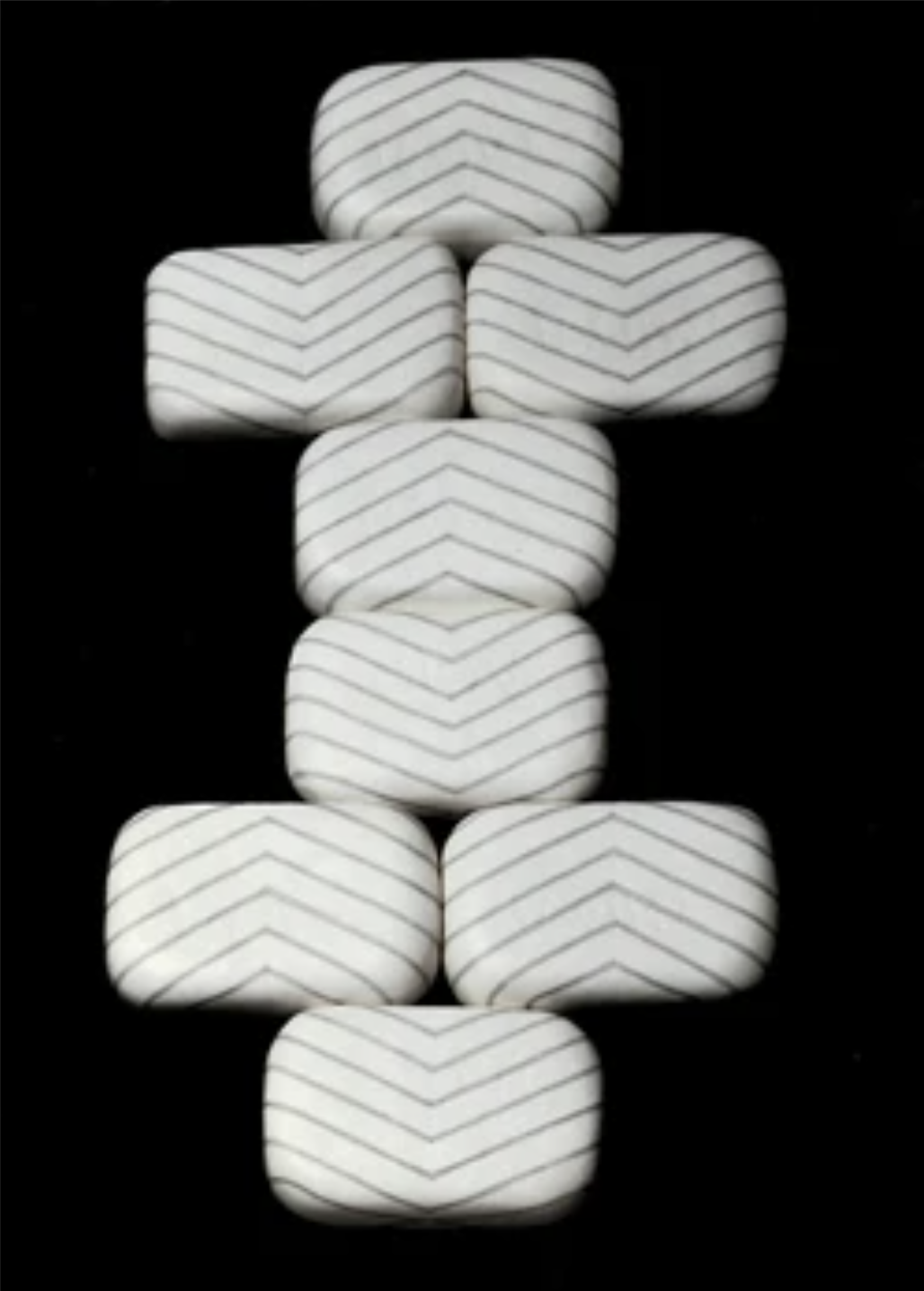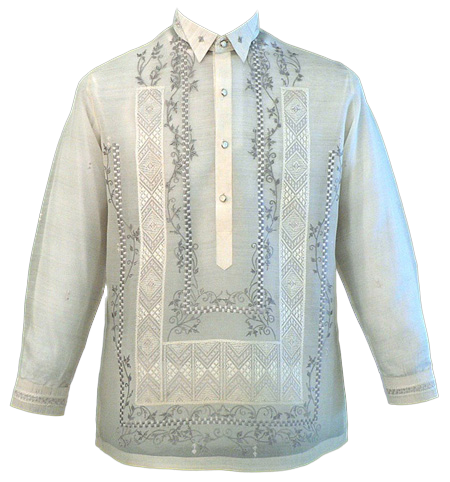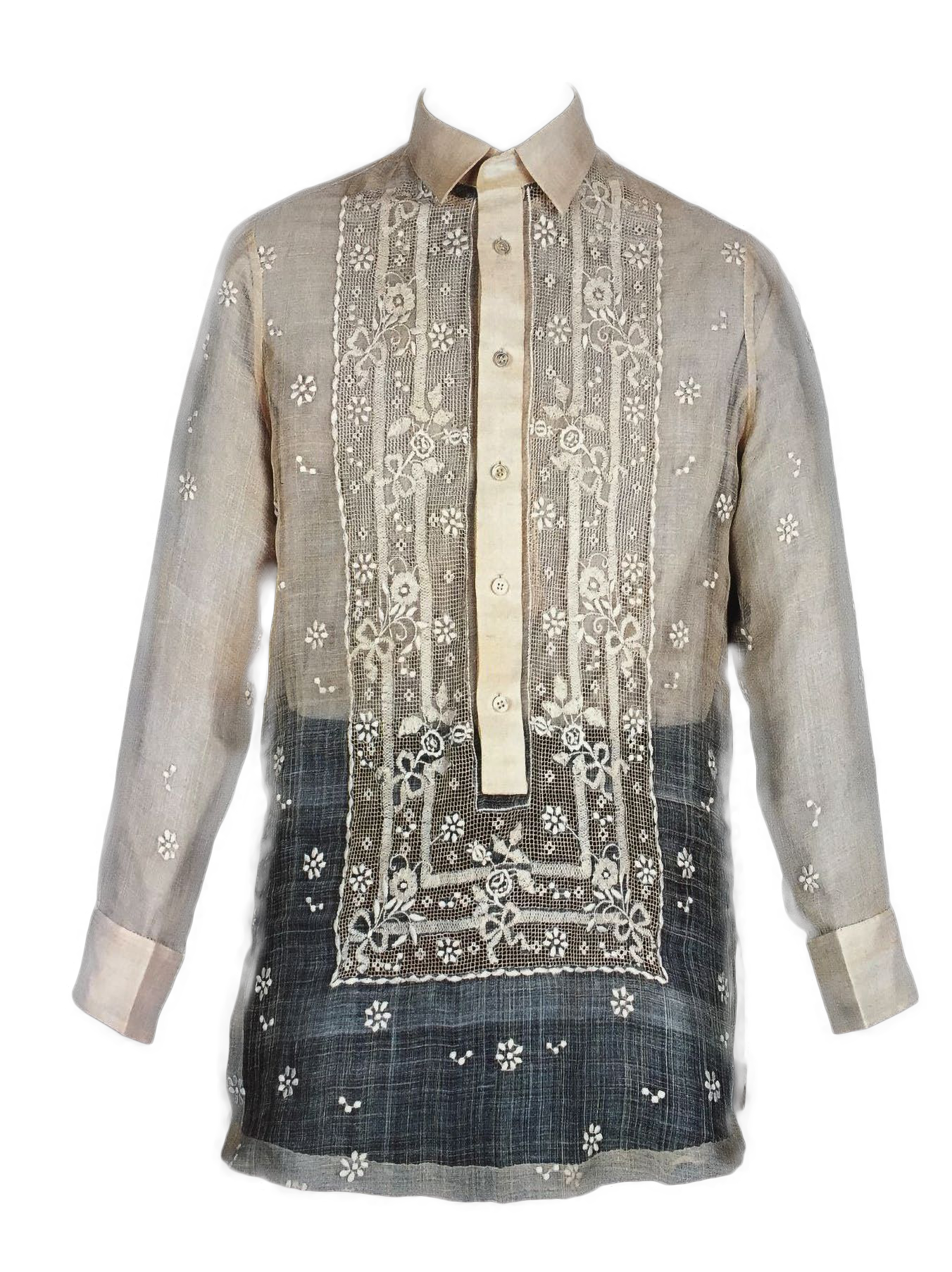3}
ABTRACTION ASSIMILATIOIN, &
.•‡•.
CODE SWITCHING .•‡•.
{3
An Inquiry by J. S.
.•*†*•.
ABSTRACTION, ASSIMILATION, AND CODE SWITCHING
.•*†*•.
ABSTRACTION, ASSIMILATION, AND CODE SWITCHING
.•*†*•.
ABSTRACTION, ASSIMILATION, AND CODE SWITCHING
.•*†*•.
ABSTRACTION, ASSIMILATION, AND CODE SWITCHING
.•*†*•.
Unfortunately for most colonized places, the imposition made by the colonizers is immovable. it has seeped into the daily practices and thoughts of the local people. The Philippines is no exception to this. The filipino language I am writing with is steeped with loaner words from spanish and english. simple terms essential to our contemporary world like lamesa/mesa (table) or kamusta (how are you) come directly from spanish. the latin script that i am writing with forcefully replaced the indigenous baybayin script of the philippines. the highly ornamented jeepneys (custom painted to the tastes of their drivers) that the lettering most famously adorns were a result of the american colonial period. our systems of expression are, to put it simply, ones that came from years of oppression.
—Corinne Ang, This Area is For Reflection and Meditation
.•*†*•.
ABSTRACTION, ASSIMILATION, AND CODE SWITCHING
.•*†*•.
ABSTRACTION, ASSIMILATION, AND CODE SWITCHING
.•*†*•.
ABSTRACTION, ASSIMILATION, AND CODE SWITCHING
.•*†*•.
ABSTRACTION, ASSIMILATION, AND CODE SWITCHING
.•*†*•.
1 Sarita Echavez See, The Decolonized Eye: Filipino American Art and Performance (Minneapolis: University of Minnesota Press), 138.
2 See, The Decolonized Eye, 56.
3 Ibid.
4 See, The Decolonized Eye, 131–133.
5 Courtney L. McCluney, Kathrina Robotham, Serenity Lee, Richard Smith, and Myles Durkee, “The Costs of Code-Switching,” Harvard Business Review, November 15, 2019. https://hbr.org/2019/11/the-costs-of-codeswitching
6 Taglish is the mixed use of Tagalog and English typically in a conversational setting.
7 This particular history is disputed; it is not certain whether or not the sheer fabric was enforced for this reason, but there is no clear documentation for or against this claim. Regardless, Spaniards enforced who could and could not wear the Barong Tagalog based on class
8 Stéphanie Marie R. Coo, “Clothing and the colonial culture of appearances in nineteenth century Spanish Philippines (1820-1896),” (PhD diss., Université Nice Sophia Antipolis, 2014), 282. https://tel.archives-ouvertes.fr/tel-01126974.
9 Ibid.
10 Roy Robles, “A Look into the History of Jeepneys — the Fragile Kings of the Philippine Roads,” Adobo Magazine, November 28, 2019. https://www.adobomagazine.com/philippine-news/arts-culture-a-look-into-the-history-of-jeepneys-the-fragile-kings-of-the-philippine-roads/
11 Ibid.
12 See, The Decolonized Eye, 140.
13 The framework of DIS/RE/ARTICULATION is discussed in more detail in the DIS/RE/ARTICULATION & COLONIAL AMNESIA section.
Feel free to place images here
2 See, The Decolonized Eye, 56.
3 Ibid.
4 See, The Decolonized Eye, 131–133.
5 Courtney L. McCluney, Kathrina Robotham, Serenity Lee, Richard Smith, and Myles Durkee, “The Costs of Code-Switching,” Harvard Business Review, November 15, 2019. https://hbr.org/2019/11/the-costs-of-codeswitching
6 Taglish is the mixed use of Tagalog and English typically in a conversational setting.
7 This particular history is disputed; it is not certain whether or not the sheer fabric was enforced for this reason, but there is no clear documentation for or against this claim. Regardless, Spaniards enforced who could and could not wear the Barong Tagalog based on class
8 Stéphanie Marie R. Coo, “Clothing and the colonial culture of appearances in nineteenth century Spanish Philippines (1820-1896),” (PhD diss., Université Nice Sophia Antipolis, 2014), 282. https://tel.archives-ouvertes.fr/tel-01126974.
9 Ibid.
10 Roy Robles, “A Look into the History of Jeepneys — the Fragile Kings of the Philippine Roads,” Adobo Magazine, November 28, 2019. https://www.adobomagazine.com/philippine-news/arts-culture-a-look-into-the-history-of-jeepneys-the-fragile-kings-of-the-philippine-roads/
11 Ibid.
12 See, The Decolonized Eye, 140.
13 The framework of DIS/RE/ARTICULATION is discussed in more detail in the DIS/RE/ARTICULATION & COLONIAL AMNESIA section.
Feel free to place images here
Feel free to place images here
Feel free to place images here
Feel free to place images here
Feel free to place images here
Feel free to place images here
Feel free to place images here
Feel free to place images here
Feel free to place images here
Feel free to place images here
Feel free to place images here
Feel free to place images here
Feel free to place images here
Feel free to place images here
Feel free to place images here
Feel free to place images here
Feel free to place images here
Feel free to place images here
Feel free to place images here
Feel free to place images here
† In the Philippines my accent would be considered “conyo.” A “conyo accent” is one that is associated with wealthier, typically upper-class, Filipinos. A conyo accent typically refers to one’s increased use of English rather than Tagalog, with a hint of an American accent when speaking Tagalog.
‡ A Barong Tagalog is comparable to a suit — most Filipinos will wear a Barong to major life milestones such as First Communions, Confirmations, Graduation, Weddings, and even as formal wear for work.
✦ The term Filipiniana will be used to represent all types of National Dresses, including but not limited to the contemporary Filiipinana, the Maria Clara, the Traje de Mestiza, the Terno, and the Baro’t Saya.
✴ To make sulit is to make the most of a situation, typically referencing frugality. Filipinos are notorious for bargaining in an attempt to make sulit.
Feel free to place images here
‡ A Barong Tagalog is comparable to a suit — most Filipinos will wear a Barong to major life milestones such as First Communions, Confirmations, Graduation, Weddings, and even as formal wear for work.
✦ The term Filipiniana will be used to represent all types of National Dresses, including but not limited to the contemporary Filiipinana, the Maria Clara, the Traje de Mestiza, the Terno, and the Baro’t Saya.
✴ To make sulit is to make the most of a situation, typically referencing frugality. Filipinos are notorious for bargaining in an attempt to make sulit.
Feel free to place images here
Feel free to place images here
Feel free to place images here
Feel free to place images here
Feel free to place images here
Feel free to place images here
Feel free to place images here
Feel free to place images here
Feel free to place images here
Feel free to place images here
Feel free to place images here
Feel free to place images here
Feel free to place images here
Feel free to place images here
Feel free to place images here
Feel free to place images here
Feel free to place images here
Feel free to place images here
Feel free to place images here
Feel free to place images here
Feel free to place images here
Feel free to place images here
ABSTRACTION in the design and art field is a powerful double-edged-sword that post/colonial minority artists may utilize in Western settings. ABSTRACTION often allows the post/colonial artist to present seemingly apolitical work in predominantly white Western spaces. Filipino American artists Paul Pfeiffer and Reanne Estrada demonstrate the power of “produc[ing] works that initially are visually alluring but, upon closer inspection, are materially or experientially repulsive or abject.”1 Pfeiffer’s Leviathan presents itself as a beautiful, large scale photograph of abstract forms. The composition is somewhat reminiscent of cathedral and church windows, allowing the work to feel DOMESTIC and familiar to a Western (Catholic) audience. Upon closer inspection it becomes apparent that this image is constructed of wigs tightly bound and taut to create the canonical form. This forces the viewer to confront “the idea of scalping,” which “threatens to overtake the initial impression of sumptuous beauty. [...] the scalping of blonds invokes a history of white paranoia and the racial savagery stereotypically attributed to Native Americans.”2 Yet Pfeiffer’s use of blond wigs also ties to the Filipino’s (internalized) colonized desire for assimilation to Western beauty standards. In creating work that easily lends itself to “universalist formalist interpretations,”3 Pfeiffer is able to simultaneously address the harms of colonization (and how it manifests itself in the post/colonial subject), while borrowing from Western and canonical forms as to ABSTRACT his work and thus insert itself into white spaces and culture.
![]()
Paul Pfeiffer, Leviathan, 1998. Digital C-print, 60 x 46 inches.
Paul Pfeiffer, Leviathan, 1998. Digital C-print, 60 x 46 inches.
![]()
![]()
Left: Reanne Estrada, II. One Thousand, One Hundred and Eight, 1998. Hair on Ivory soap in shadowbox on terry cloth—covered pedestal. 37 x 10 x 11 inches.
Right: Reanne Estrada, VIII. One Hundred Thirty-Six, 1998. Hair on ivory soap in shadowbox on terry cloth-covered pedestal. 37 x 21 x 17 inches.
Reanne Estrada utilizes ABSTRACTION similarly to Pfeiffer in two of her sculptures titled II. One Thousand, One Hundred and Eight, and VIII. One Hundred Thirty-Six. At first glance, the viewer is confronted with seemingly ABSTRACT forms. Just like Pfeiffer’s Leviathan, Estrada’s sculptures are DOMESTIC enough to be accepted by a Western audience. Though it is concurrently shocking to this audience upon the discovery that these are pieces of hair painstakingly glued onto soap. Immediately, the audience is reminded “of the way in which the idea of filth and excrement consolidates an arbitrary social order organized around invidious difference, e.g. between pure and the polluted, between the sanitary and dirty,” between the colonizer and the colonized, for “hair does not belong on soap.”4 Furthermore, the evolution (or rather, the devolution) from II. One Thousand, One Hundred and Eight to VIII. One Hundred Thirty-Six can be understood as the growth of Philippine culture and identity post-1946 independence. As the pieces of soap now adorn less traces of hair and thus bring whiteness to the forefront, we are confronted with the results of U.S. colonization. From a racist colonial view, the use of soap represents the misguided notion that the colonization of the Filipino has “cleaned” them of their savagery and transformed them into a Pearl, for the dirt is gone and mostly whiteness remains. The lack of hair provides the viewer with agency to decide whether or not they want to look past the soap’s whiteness. The series speaks to how the Filipino is able to look back on these traces of hair that are slowly deteriorating and understand the dual nature of their colonization. Viewed from a Filipino perspective, we can understand the hair as the repulsive colonizer, slowly being washed away in our post/colonial independence, while still remaining as the legacies of Spanish and American colonialism continue to fester. In washing these strands away, the post/colonial Filipino continues to develop into a Perlas.
ABSTRACTION, I argue, can be understood as a form of CODE SWITCHING, and even ASSIMILATION to a certain sense. For the purposes of this manifesto, CODE SWITCHING is defined as the (often covert, but also overt) change of an individual’s behavior in response to their direct surroundings and/or stimuli. CODE SWITCHING is often understood as a form of “survival” that an individual utilizes when in settings that may not necessarily welcome them.5 For example, I constantly catch myself CODE SWITCHING in the United States. Throughout my last 5 years here, I have quickly developed an American accent to the point where most people are surprised to hear that I am from the Philippines. Yet once I begin conversing with any Filipino, my accent completely changes to one that is distinctly Filipino.† This has led to what I personally feel as my quick assimilation to American culture and society, as I’ve picked up many other conventions beyond an American accent. This form of CODE SWITCHING and ASSIMILATION for the Filipino/American in the U.S. is nothing new however, as most upper-class Filipinos in the Philippines have gained fluency in English since U.S. Colonial rule (with the generations before them being fluent in Spanish as a result of Spanish Colonial rule).
English fluency is not only an indicator of class, but also one of education and “professionalism.” Most “formal” client-facing and mid-to-upper-level jobs require proficiency in English. Even foreigners fluent in English (or Filipinos like myself who have lost fluency in Tagalog) will be seen as more valuable to a company if they are able to coherently articulate thought in English—more so if the speaker does not have a thick Filipino accent. I recount my experience working at an advertising agency, where the day-to-day tongue was predominantly Tagalog. When brainstorming and discussing ideas amongst ourselves internally, Tagalog (and/or Taglish6) was the way to go. I once presented design concepts to my managers in English, and they both laughed at me, making jokes that they were the final client and I was the creative director for the project. Every time we met with our client every person in the room was speaking English for the sake of professionalism, even though most people in that room were actually more fluent in Tagalog. Because of my more American-sounding accent, my manager actually let me present some designs to our client, and made a point to say that I was currently studying design in the United States to add legitimacy to the fact that an intern was presenting ideas, and not someone higher-up. The “benefits” of my ASSIMILATION to the culture of the United States has provided me with an increased proximity to whiteness that is not only valued in the U.S., but also in post/colonial Philippines.
![01]()
![03]()
![02]()
Pic 01—03
Various Barong Tagalogs.
Filipinos are masters of covert ASSIMILATION — that is, ASSIMILATION from colonization that over time has turned into a form of cultural reclamation. Several national Philippine symbols have a direct link to our history of colonization. The Barong Tagalog, our Philippine National Costume for those who identify as men, is made of transparent piña cloth not only because of the abundance of Native Red Philippine Pineapples, but also, and more importantly, because of its sheer nature. Spanish colonizers during their rule would invoke the use of clothing made from piña to allow soldiers to easily identify if any Filipinos were holding weapons in fear of a rebellion,8 as well as a way to distinguish between castes of Filipinos. Over time, Filipinos have come to accept its wide use and adopted it as an icon for Nationalistic Pride.‡ The Barong Tagalog’s female counterpart, the Filipiniana,✦ similarly upholds colonial ideals. The more contemporary Filipiniana dress that we see today rose to popularity towards the end of Spanish colonization in the late 19th century. The contemporary Filipiniana is recognized for its sharp & structured shoulders, signifying the power and opulence of Filipinas. Yet similar to the Barong Tagalog, the Filipiniana was weaponized by the Spaniards. There was an enforcement of who could wear the Filipiniana, and this was strictly limited to Mestizas (Spanish-Filipinos). The class distinction between Native Filipinos, poor Filipinos, dark-skinned Filipinos (mixed race and not), Mestizo/as, and Spanish were materialized through clothing.9 Though the contemporary Filipiniana can now be worn by any Filipino, it is still a dress that is most often adorned by wealthy Filipinos.
![04]()
![06]()
![05]()
Pic 04—06
Different variations of the contemporary Filipiniana.
The Jeepney, one of the most recognized Filipino cultural icons, is a product of U.S. Colonization. Jeepneys (a Filipino word adopted from the English word “Jitney”) rose to popularity in the mid-late 20th century after the Philippines gained independence from U.S. Colonial rule. In this process, the U.S. left behind Jeeps that were used during occupation & World War 2.10 Local Filipino jeepney drivers, masters of making sulit,✴ stripped apart these Jeeps and customized them to their liking after a majority of their vehicles were destroyed during WW2.11 In an attempt to theme their Jeepneys to match the preferences of their customers, one can observe motifs of Jesus, Mother Mary, Patron Saints, and even Western cultural icons like the Avengers or Mariah Carey embellished on the vehicles.
Yet this ASSIMILATION from U.S. and Spanish colonization in the Philippines is not fully understood from a Western perspective. Revisiting the tool of ABSTRACTION utilized by Filipino/American artists in the United States, we are able to understand the importance of the context in which these artists create work. Filipino Americans in a Western setting are, in a sense, forced to abstract (and CODE SWITCH) their work for it (and themselves) to be accepted in white spaces. Unlike their local Filipino counterparts, the Filipino/American practice of ABSTRACTION is essential, as it “entails techniques of camouflage and trickery, wherein the post/colonial or minority artist uses stolen signs from the dominant culture both for and to other purposes.”12 In utilizing the tool of abstraction, the artist must also recognize how it is the in-between point of dis/articulation and re/articulation — their work must be re/articulated to be understood and accepted by a Westeren audience, but is simultaneously being dis/articulated in how it detaches itself from the overt aesthetics of Filipino culture.13
![07]()
![08]()
![09]()
Pic 07—09
Jeepneys spotted in Metro Manila
As I produce this de/colonial graphic design work in a Western setting, I challenge myself to strike the balance between work that is Filipino (loud and proud!) and Filipino/American (ABSTRACTED). I believe that it is important to produce work that will not alienate itself or its viewers. This means producing work that is ABSTRACT enough (or simply work that is grounded in some form of Western Graphic Design), while simultaneously being outrageously different (Filipino!). Yet, I must reflect upon this goal and the overall framework of abstraction as a tool of c/overt colonialism. Post/colonial minority artists in a Western setting (i.e., myself) are still forced to function and produce work under the colonizing Western eye, even when attempting to articulate our own post/de/colonial artistic voices.

Paul Pfeiffer, Leviathan, 1998. Digital C-print, 60 x 46 inches.
Paul Pfeiffer, Leviathan, 1998. Digital C-print, 60 x 46 inches.


Left: Reanne Estrada, II. One Thousand, One Hundred and Eight, 1998. Hair on Ivory soap in shadowbox on terry cloth—covered pedestal. 37 x 10 x 11 inches.
Right: Reanne Estrada, VIII. One Hundred Thirty-Six, 1998. Hair on ivory soap in shadowbox on terry cloth-covered pedestal. 37 x 21 x 17 inches.
Reanne Estrada utilizes ABSTRACTION similarly to Pfeiffer in two of her sculptures titled II. One Thousand, One Hundred and Eight, and VIII. One Hundred Thirty-Six. At first glance, the viewer is confronted with seemingly ABSTRACT forms. Just like Pfeiffer’s Leviathan, Estrada’s sculptures are DOMESTIC enough to be accepted by a Western audience. Though it is concurrently shocking to this audience upon the discovery that these are pieces of hair painstakingly glued onto soap. Immediately, the audience is reminded “of the way in which the idea of filth and excrement consolidates an arbitrary social order organized around invidious difference, e.g. between pure and the polluted, between the sanitary and dirty,” between the colonizer and the colonized, for “hair does not belong on soap.”4 Furthermore, the evolution (or rather, the devolution) from II. One Thousand, One Hundred and Eight to VIII. One Hundred Thirty-Six can be understood as the growth of Philippine culture and identity post-1946 independence. As the pieces of soap now adorn less traces of hair and thus bring whiteness to the forefront, we are confronted with the results of U.S. colonization. From a racist colonial view, the use of soap represents the misguided notion that the colonization of the Filipino has “cleaned” them of their savagery and transformed them into a Pearl, for the dirt is gone and mostly whiteness remains. The lack of hair provides the viewer with agency to decide whether or not they want to look past the soap’s whiteness. The series speaks to how the Filipino is able to look back on these traces of hair that are slowly deteriorating and understand the dual nature of their colonization. Viewed from a Filipino perspective, we can understand the hair as the repulsive colonizer, slowly being washed away in our post/colonial independence, while still remaining as the legacies of Spanish and American colonialism continue to fester. In washing these strands away, the post/colonial Filipino continues to develop into a Perlas.
ABSTRACTION, I argue, can be understood as a form of CODE SWITCHING, and even ASSIMILATION to a certain sense. For the purposes of this manifesto, CODE SWITCHING is defined as the (often covert, but also overt) change of an individual’s behavior in response to their direct surroundings and/or stimuli. CODE SWITCHING is often understood as a form of “survival” that an individual utilizes when in settings that may not necessarily welcome them.5 For example, I constantly catch myself CODE SWITCHING in the United States. Throughout my last 5 years here, I have quickly developed an American accent to the point where most people are surprised to hear that I am from the Philippines. Yet once I begin conversing with any Filipino, my accent completely changes to one that is distinctly Filipino.† This has led to what I personally feel as my quick assimilation to American culture and society, as I’ve picked up many other conventions beyond an American accent. This form of CODE SWITCHING and ASSIMILATION for the Filipino/American in the U.S. is nothing new however, as most upper-class Filipinos in the Philippines have gained fluency in English since U.S. Colonial rule (with the generations before them being fluent in Spanish as a result of Spanish Colonial rule).
English fluency is not only an indicator of class, but also one of education and “professionalism.” Most “formal” client-facing and mid-to-upper-level jobs require proficiency in English. Even foreigners fluent in English (or Filipinos like myself who have lost fluency in Tagalog) will be seen as more valuable to a company if they are able to coherently articulate thought in English—more so if the speaker does not have a thick Filipino accent. I recount my experience working at an advertising agency, where the day-to-day tongue was predominantly Tagalog. When brainstorming and discussing ideas amongst ourselves internally, Tagalog (and/or Taglish6) was the way to go. I once presented design concepts to my managers in English, and they both laughed at me, making jokes that they were the final client and I was the creative director for the project. Every time we met with our client every person in the room was speaking English for the sake of professionalism, even though most people in that room were actually more fluent in Tagalog. Because of my more American-sounding accent, my manager actually let me present some designs to our client, and made a point to say that I was currently studying design in the United States to add legitimacy to the fact that an intern was presenting ideas, and not someone higher-up. The “benefits” of my ASSIMILATION to the culture of the United States has provided me with an increased proximity to whiteness that is not only valued in the U.S., but also in post/colonial Philippines.



Pic 01—03
Various Barong Tagalogs.
Filipinos are masters of covert ASSIMILATION — that is, ASSIMILATION from colonization that over time has turned into a form of cultural reclamation. Several national Philippine symbols have a direct link to our history of colonization. The Barong Tagalog, our Philippine National Costume for those who identify as men, is made of transparent piña cloth not only because of the abundance of Native Red Philippine Pineapples, but also, and more importantly, because of its sheer nature. Spanish colonizers during their rule would invoke the use of clothing made from piña to allow soldiers to easily identify if any Filipinos were holding weapons in fear of a rebellion,8 as well as a way to distinguish between castes of Filipinos. Over time, Filipinos have come to accept its wide use and adopted it as an icon for Nationalistic Pride.‡ The Barong Tagalog’s female counterpart, the Filipiniana,✦ similarly upholds colonial ideals. The more contemporary Filipiniana dress that we see today rose to popularity towards the end of Spanish colonization in the late 19th century. The contemporary Filipiniana is recognized for its sharp & structured shoulders, signifying the power and opulence of Filipinas. Yet similar to the Barong Tagalog, the Filipiniana was weaponized by the Spaniards. There was an enforcement of who could wear the Filipiniana, and this was strictly limited to Mestizas (Spanish-Filipinos). The class distinction between Native Filipinos, poor Filipinos, dark-skinned Filipinos (mixed race and not), Mestizo/as, and Spanish were materialized through clothing.9 Though the contemporary Filipiniana can now be worn by any Filipino, it is still a dress that is most often adorned by wealthy Filipinos.



Pic 04—06
Different variations of the contemporary Filipiniana.
The Jeepney, one of the most recognized Filipino cultural icons, is a product of U.S. Colonization. Jeepneys (a Filipino word adopted from the English word “Jitney”) rose to popularity in the mid-late 20th century after the Philippines gained independence from U.S. Colonial rule. In this process, the U.S. left behind Jeeps that were used during occupation & World War 2.10 Local Filipino jeepney drivers, masters of making sulit,✴ stripped apart these Jeeps and customized them to their liking after a majority of their vehicles were destroyed during WW2.11 In an attempt to theme their Jeepneys to match the preferences of their customers, one can observe motifs of Jesus, Mother Mary, Patron Saints, and even Western cultural icons like the Avengers or Mariah Carey embellished on the vehicles.
Yet this ASSIMILATION from U.S. and Spanish colonization in the Philippines is not fully understood from a Western perspective. Revisiting the tool of ABSTRACTION utilized by Filipino/American artists in the United States, we are able to understand the importance of the context in which these artists create work. Filipino Americans in a Western setting are, in a sense, forced to abstract (and CODE SWITCH) their work for it (and themselves) to be accepted in white spaces. Unlike their local Filipino counterparts, the Filipino/American practice of ABSTRACTION is essential, as it “entails techniques of camouflage and trickery, wherein the post/colonial or minority artist uses stolen signs from the dominant culture both for and to other purposes.”12 In utilizing the tool of abstraction, the artist must also recognize how it is the in-between point of dis/articulation and re/articulation — their work must be re/articulated to be understood and accepted by a Westeren audience, but is simultaneously being dis/articulated in how it detaches itself from the overt aesthetics of Filipino culture.13



Pic 07—09
Jeepneys spotted in Metro Manila
As I produce this de/colonial graphic design work in a Western setting, I challenge myself to strike the balance between work that is Filipino (loud and proud!) and Filipino/American (ABSTRACTED). I believe that it is important to produce work that will not alienate itself or its viewers. This means producing work that is ABSTRACT enough (or simply work that is grounded in some form of Western Graphic Design), while simultaneously being outrageously different (Filipino!). Yet, I must reflect upon this goal and the overall framework of abstraction as a tool of c/overt colonialism. Post/colonial minority artists in a Western setting (i.e., myself) are still forced to function and produce work under the colonizing Western eye, even when attempting to articulate our own post/de/colonial artistic voices.
•.•¡•.¡.•. FRAMEWORKS .•.¡.•¡•.•
•. COGNITIVE JUSTICE .•
•. EROS IDEOLOGIES .•
•.ABSTRACTIONASSIMILATION, & CODESWITCHING .•
>•. FOREIGN IN A DOMESTIC SENSE .•
•. DIS/RE/ARTICULATON & COLONIAL AMNESIA .•
•. GOOD BAD DESIGN, CREATIVE MISPRONUNCIATION, & MAXIMALISM .•
•. COGNITIVE JUSTICE .•
•. EROS IDEOLOGIES .•
•.ABSTRACTIONASSIMILATION, & CODESWITCHING .•
>•. FOREIGN IN A DOMESTIC SENSE .•
•. DIS/RE/ARTICULATON & COLONIAL AMNESIA .•
•. GOOD BAD DESIGN, CREATIVE MISPRONUNCIATION, & MAXIMALISM .•
•. FRAMEWORKS .•
•. COGNITIVE JUSTICE .•
•. EROS IDEOLOGIES .•
•.ABSTRACTIONASSIMILATION, & CODESWITCHING .•
>•. FOREIGNINADOMESTICSENSE .•
•. DIS/RE/ARTICULATON & COLONIAL AMNESIA .•
•. GOOD BAD DESIGN, CREATIVE MISPRONUNCIATION, & MAXIMALISM .•
•. COGNITIVE JUSTICE .•
•. EROS IDEOLOGIES .•
•.ABSTRACTIONASSIMILATION, & CODESWITCHING .•
>•. FOREIGNINADOMESTICSENSE .•
•. DIS/RE/ARTICULATON & COLONIAL AMNESIA .•
•. GOOD BAD DESIGN, CREATIVE MISPRONUNCIATION, & MAXIMALISM .•